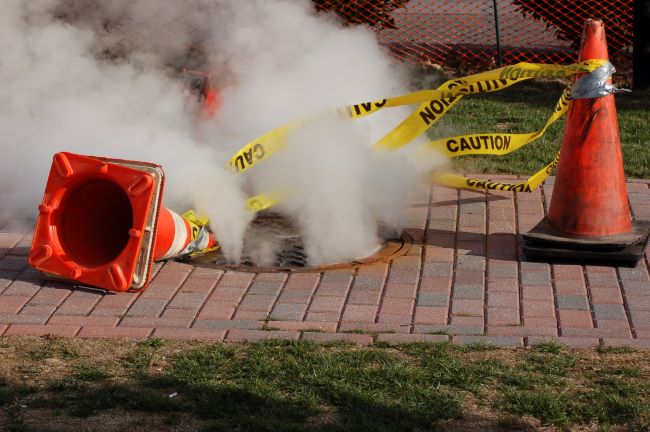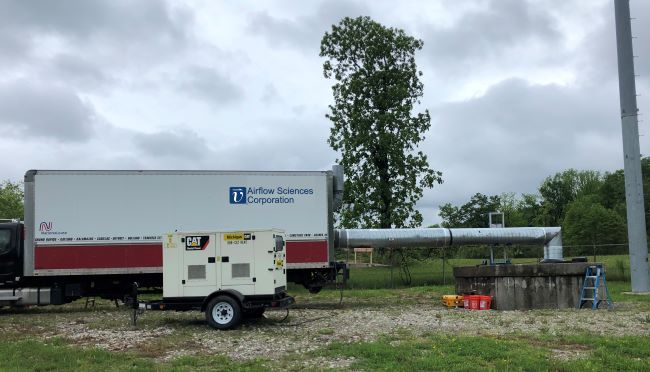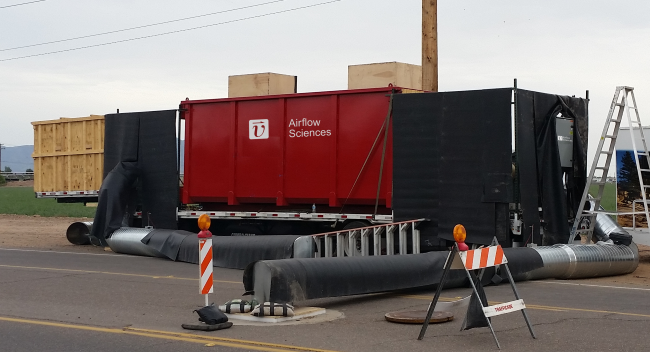Mobile Sewer Odor Testing
By Matthew Gentry
Sewer odor complaints are an increasing problem for large metropolitan areas. Sewer odor emissions are caused by the generation of positive air pressures within the sewer system which force odorous air through manholes and vents into the atmosphere. An increasingly popular odor control technique is to depressurize the sewer system by withdrawing air with a suitably sized and located fan. The withdrawn air is scrubbed to remove odors and then released into the atmosphere. The fan location and size are critical to implementing a successful and cost-effective odor control facility.
With location and size optimized, the proper fan will both increase negative pressure of the sewer system and reduce odor-causing hydrogen sulfide (H2S) emissions.

Airflow Sciences Corporation (ASC) has worked with municipalities and engineering firms for ten years to optimize their fan sizing and location. Airflow Sciences' Mobile Extractive Sewer Sampler (MESS) is equipped with the ductwork and fan necessary for mobile sewer odor control testing. The entire system is mounted in a standard 26-foot box truck and is fully portable. The MESS can be driven directly up to a manhole test location.

For particularly odorous sampling locations, a carbon adsorber is integrated with the fan system. The odor control system allows for testing areas with high H2S levels without disrupting neighboring residents or businesses. This version of the sewer fan system is mounted to a flatbed trailer. Mobility and access to more remote test locations are thus slightly limited compared to the MESS truck system, and proper planning in terms of traffic control is required. The full system with odor control has been used at more than five sampling locations in multiple municipalities without issue.

Both sewer test systems use high accuracy pressure transducers to monitor fan flow rate throughout the testing, and portable pressure transducers and H2S monitors are used for rapid data collection at remote locations along the sewer trunk. Throughout a test, the fan speed is typically varied while the pressures and H2S concentrations are monitored at many remote locations to establish the zone of influence of the fan. These data are used for design validation or optimization prior to committing to the expense of installing a permanent system.
Having sewer odor problems? Contact ASC and we will send out our MESS to clean up yours.
Learn more :
